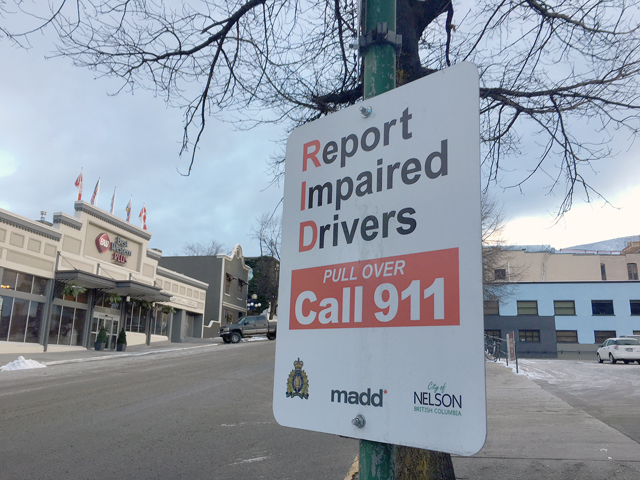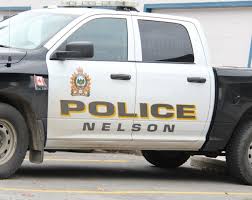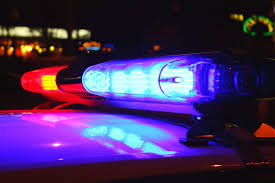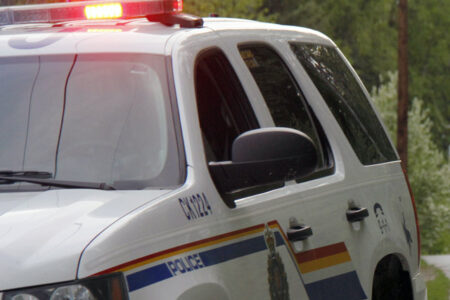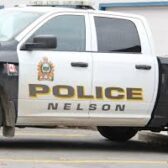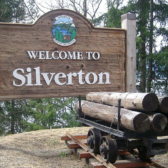Nelson an unsafe place to live? City ranks in top third of most dangerous places in the nation to live
Lock your doors and bar your windows.
If the findings of a recent survey by MacLeans magazine in Canada’s Most Dangerous Places 2018 is to be believed, Nelson isn’t as safe of a place to live as it seems.
The Heritage city was ranked 66th most dangerous on the list of 229 communities over 10,000 people surveyed in Canada, ranking ahead of major Canadian centres like Toronto, Richmond, Kelowna, Montreal, Hamilton and North Vancouver.
Nelson also held the dubious high ranking of 10th on the impaired driving ranking, based on an averaged rate of incidents per 100,000 population (although Nelson was listed at 10,245 people), as well as an expected high ranking of eighth on the cannabis trafficking or production crime rate list.
In addition, the gentle nature of Nelson was not reflected in the 18th place ranking for assault incident rates (per 100,000 population), and a 62nd rank for sexual assaults.
The statistics may be shocking, but the survey findings are less of a case of Nelson showing a surprising seedier side to its underbelly than it is the Nelson Police Department (NPD) doing its job and getting its man, explained the city’s top cop, and then magnified by a smaller sampling size of statistics for a city of 10,000 being unfairly extrapolated over 100,000 population.
Even so, there is some merit to the numbers, said NPD chief constable Paul Burkhart. It was not a coincidence impaired files have increased this year over the previous two years in Nelson, reflected in the city’s 10th place ranking.
“Since we have increased our staffing levels in this past year, our members are on the streets doing more proactive policing,” he said. “They are not simply running from call to call, rather they are out targeting offenders.”
And the offenders targeted are impaired drivers, with NPD officers completing 91 impaired investigations — MacLeans noted only 68, using only impaired by alcohol statistics and not alcohol and drug investigation figures — in 2017 compared to 50 in 2016 and 28 in 2015.
“Having more members on the street allowed us to get more impaired drivers off the street and make our streets safer,” Burkhart explained. “Those impaired drivers were there in 2015 and 2016, we simply were not able to detect and charge them as we did not have the staffing to do this proactive enforcement.”
The report ranked communities based on the crime severity index, a Statistics Canada measurement of all police-reported crime, which takes into consideration both the volume and the seriousness of the offences.
Nearly half of the communities above Nelson on the list were BC-based — a total of 27 — with Williams Lake the highest ranked at number four. North Battleford, Sask. held the notoriety of the most-dangerous-place-in-the-nation title, while Thompson, Man., was second, Prince Albert, Sask. was third and Red Deer, Alta. was fifth to round out the top five.
But Nelson has been caught up in a numbers game, both unfairly and sobering so, said Burkhart.
“We have said for years that our statistics are high in Nelson and I think that can be associated to a number of factors: core city and staffing/proactive policing,” he said.
That breaks down to Nelson being a core city, Burkhart said, and attracting a much larger population each day than a census would reveal. The crime index and ranking system uses a “per 100,000 ratio,” but the MacLeans‘ article is based on a population of 10,245, multiplying the city’s crime figures tenfold.
“The problem with this, as we have brought up with city council every year when we speak about staffing and budgets, is we service more people than those that live in Nelson,” he said.
In addition to Nelson’s census population, Burkhart said the city and the police also service up to 7,000 more people who attend Nelson to work, play, shop, attend school, drink in the local bars, eat in the restaurants, use the hospital or government services or food banks.
“So our statistics for crime are inflated as we are closer to 15,000 to 17,000 people rather than the statistical 10,245,” he explained. “So our crime rate for citizens is fairly average if compared to our actual daily number of people being policed by our department.”
The report only serves to highlight an ongoing major concern for the NPD that it is only staffed for a population of 10,000 or less, leaving the police department to feel the brunt of the additional population.
As a result, the call and crime rates in the city are increasing, Burkhart noted.
“It is our (police force) members who are dealing with the increase in police calls and the higher crime rates,” he said.
But many of the calls would not even fall under the crime severity index, Burkhart added, such as mental health calls, motor vehicle accidents and traffic offences.
Looking at the other two smallest independent municipal police departments in B.C. — Central Saanich (ranked 200) and Oak Bay (ranked 217) — Nelson’s statistics are significantly higher, even though they have 24 officers each compared to Nelson’s 18 officers.
In fact, last year alone the NPD’s 18 members dealt with over 6,600 calls (300 more than the year previous), while Oak Bay and Central Saanich’s 24-member detachments dealt with about 4,300 calls each.
“So we are doing 65 per cent more calls with 25 per cent less officers,” Burkhart said. “Yes we are very busy, but that does not make us unsafe.”
Last year NPD officers attended 92 assault calls, down from the two previous years of 108 and 103, but very high compared to Oak Bay’s 14 and Central Saanich’s 41. “Our break and enters dropped slightly from 33 the two years previous to 31 this past year,” Burkhart said. “Our recorded sex assaults were down from nine and eight the two previous years to seven. The biggest increase was in our number of impaired charges.”
Even with Nelson’s inflated ranking, much of the crime committed in the city does not affect the average citizen, said Burkhaart, so it feels safe even though the statistics may say it is not quite as safe as it feels.
“But that is also part of our job: to make feel people feel safe,” he said.
You can check out the MacLeans’ survey at http://www.macleans.ca/canadas-most-dangerous-places/



